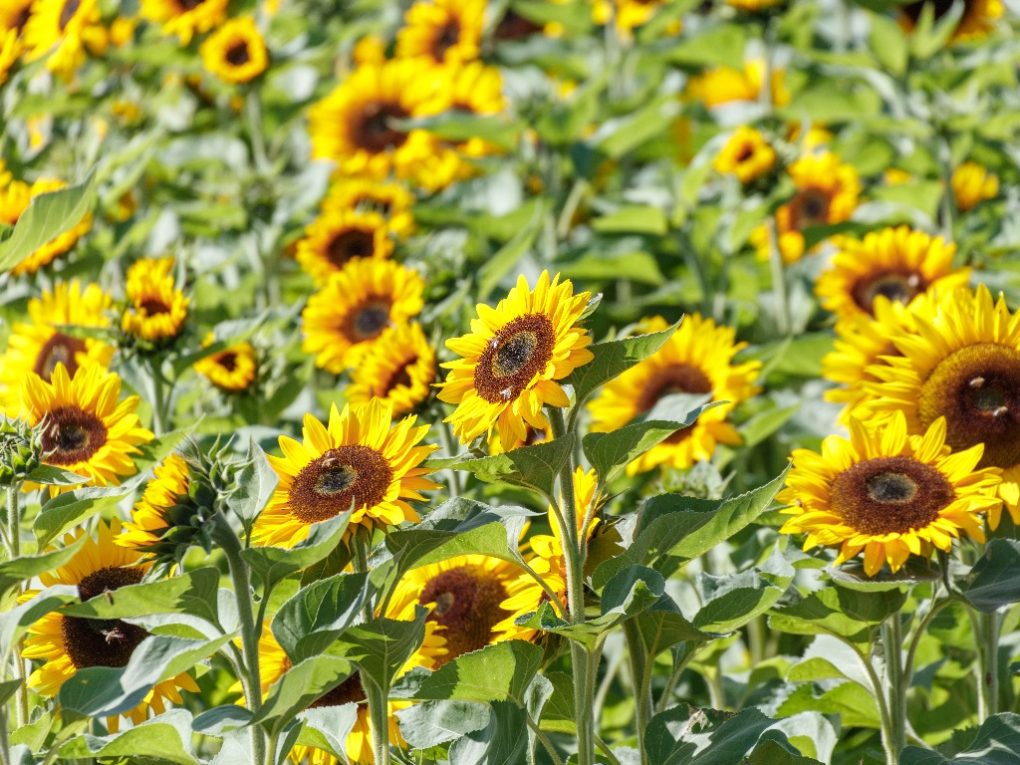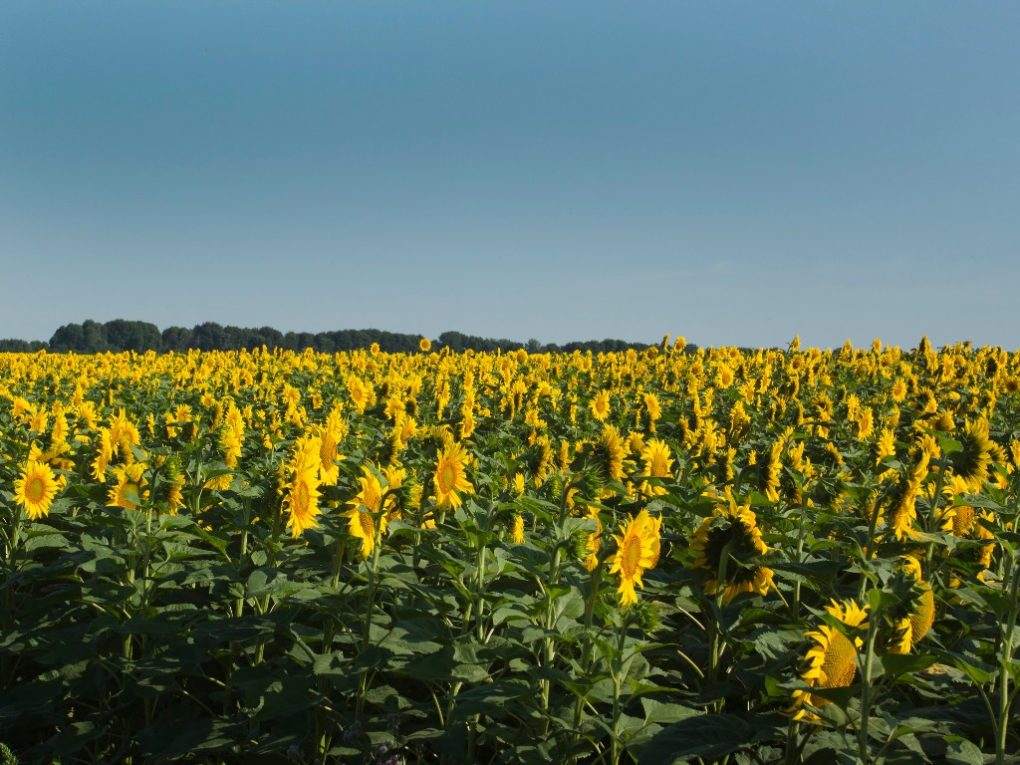Do Sunflowers Face East: The Science Behind Sunflower Orientation
Yes, sunflowers face east. Sunflowers are known for their striking beauty and unique ability to follow the sun throughout the day. However, this behavior is not limited to young sunflowers; even mature plants continue to face east, indicating that this orientation offers a significant advantage for their survival and reproduction.

Recent research has shed light on this topic, revealing that sunflowers face east in the morning to attract more bees and increase their chances of pollination. The warmth of the morning sun also helps the plants reproduce more efficiently, leading to a higher number of seeds and healthier offspring.
Despite the numerous studies and research conducted on this topic, there is still much to learn about the behavior of sunflowers and their unique ability to follow the sun. However, recent discoveries provide valuable insights into the complex mechanisms that govern the behavior of these beautiful plants and highlight the importance of understanding the natural world around us.
Table of Contents
The Science Behind Sunflower Orientation
Heliotropism
According to West Virginia University, heliotropism is plants’ ability to follow the sun’s movement across the sky. Sunflowers exhibit heliotropism called solar tracking, where the flower heads follow the sun as it moves across the sky during the day. I’ve witnessed this personally as my partner took me to a sunflower farm.
Heliotropism is because the flowers are more attractive to pollinators when facing the sun, and it also helps the plant absorb more energy from the sun for photosynthesis.
The combination of phototropism, circadian rhythm, and heliotropism causes sunflowers to face east in the morning and west in the evening. This behavior is essential for the survival and reproduction of sunflowers, as it allows them to absorb more energy from the sun and attract more pollinators.
Phototropism
Phototropism is the phenomenon where plants grow towards a source of light. This is what causes sunflowers to face the sun during the day. The sunflower’s stem can detect the direction of the light and will grow towards it because the cells on the shaded side of the stem elongate, causing the stem to bend toward the light source.

Circadian Rhythm
The circadian rhythm is the biological clock that regulates the sleep-wake cycle in humans. The circadian rhythm regulates various physiological processes in plants, including sunflower orientation. Research has shown that sunflowers have an internal clock that tells them when to start moving toward the sun in the morning and when to stop moving in the evening.
Sunflower Behavior
Factors That Influence Sunflower Orientation
Sunflowers are known for their ability to track the sun, a process called heliotropism. However, contrary to popular belief, sunflowers do not always face east. The direction in which a sunflower face is influenced by several factors, including the sun’s position, temperature, and the age of the flowerhead.
Sunflower Orientation During Growth
As sunflowers grow, their flowerheads turn back and forth to track the sun during the day. The plant’s internal circadian clock controls this process. They should face east as they produce more offspring. The young plant’s sun-tracking can be explained by circadian rhythms – the behavioral changes tied to an organism’s internal biological clock.
Sunflower Orientation During Bloom
During the bloom, sunflowers tend to face east in the morning and follow the sun as it moves westward throughout the day. This adaptation allows the flower to attract more pollinators, such as bees, by increasing its visibility. When postdoctoral researcher Nicky Creux changed the orientation of sunflowers by turning their pots around, she noticed that east-facing flower heads attracted more bees.

Sunflowers exhibit a unique and fascinating behavior called heliotropism, which involves tracking the sun throughout the day. While they tend to face east during growth and bloom, the direction in which a sunflower face is influenced by several factors, including the sun’s position and temperature. Sunflowers’ ability to track the sun is an adaptation that helps them attract pollinators and produce more offspring.
Practical Applications
Food
Sunflowers have several uses in the food industry. The seeds can be used as a healthy snack or ingredient in various dishes, such as salads, baked goods, and snacks. Sunflower seeds can also produce sunflower seed butter, a nut-free alternative to peanut butter that is popular among people with allergies.
Sunflower oil is another important food product derived from sunflowers, widely used in cooking, baking, and frying due to its mild flavor and high smoke point. Sunflower oil is also used in the production of margarine and other spreads.

Oil Production
Sunflowers are an important source of vegetable oil, with sunflower oil being one of the world’s most widely used cooking oils. Sunflower oil is extracted from the seeds of the sunflower plant, which contain between 40% to 50% oil by weight.
Extracting sunflower oil involves several steps, including cleaning, dehulling, pressing, and refining. The first step involves cleaning the seeds to remove any dirt or debris. The seeds are then de-hulled to remove the outer shell and reveal the kernel, which contains the oil.
The next step is pressing, where the oil is extracted from the kernels. This can be done using either a cold-pressing or a solvent extraction method. Cold-pressing involves using a mechanical press to extract the oil, while solvent extraction involves using a chemical solvent to extract the oil.
After the oil is extracted, it is refined to remove impurities and improve its shelf life. This involves several processes, including degumming, neutralization, bleaching, and deodorization.
Land Remediation
Sunflowers have been found to have the ability to absorb heavy metals and other toxins from the soil, making them useful in land remediation. This process, known as phytoremediation, involves using plants to remove pollutants from contaminated soil.

Sunflowers are particularly effective at phytoremediation due to their large size and deep root system, which can extract toxins from the soil and store them in the plant tissues. In addition, they can absorb heavy metals such as lead, arsenic, and cadmium, as well as organic pollutants like polycyclic aromatic hydrocarbons (PAHs).
After the sunflowers have absorbed the contaminants, they can be harvested and disposed of safely, such as by incineration or burial. Alternatively, the contaminated plant material can be used to generate biofuel or converted into other useful products.
Sunflower Tracking Technology
The fact that sunflowers track the sun as they grow has inspired researchers to develop new technologies for solar tracking. By studying the mechanisms that allow sunflowers to move their heads, scientists have developed new types of solar panels that can follow the sun’s path across the sky. These panels can increase the efficiency of solar power generation by up to 40%, which could have significant implications for the renewable energy industry.
The behavior of sunflowers facing east has important practical applications in agriculture and technology. By understanding how sunflowers behave, we can optimize their growth and yield and develop new technologies for solar power generation.
